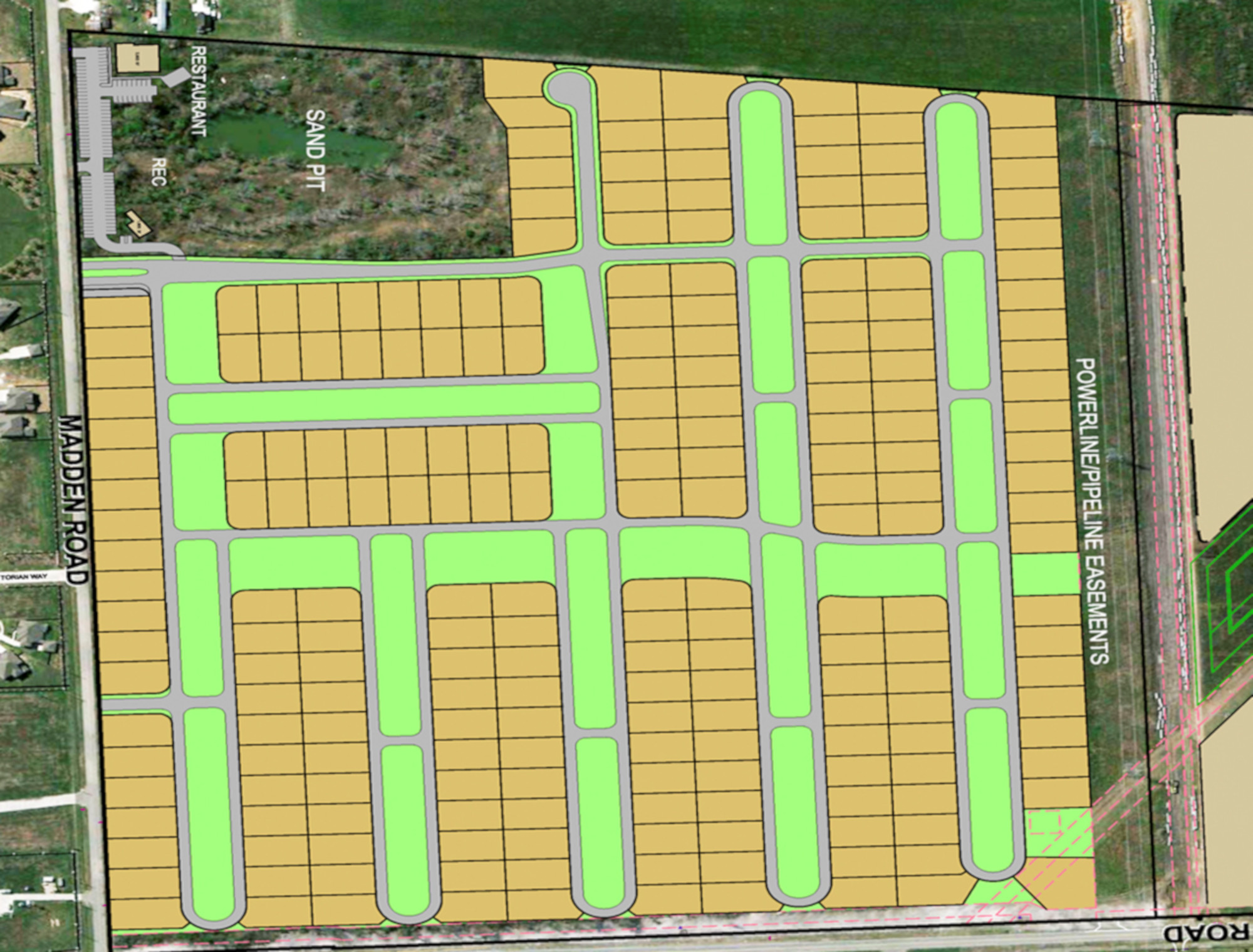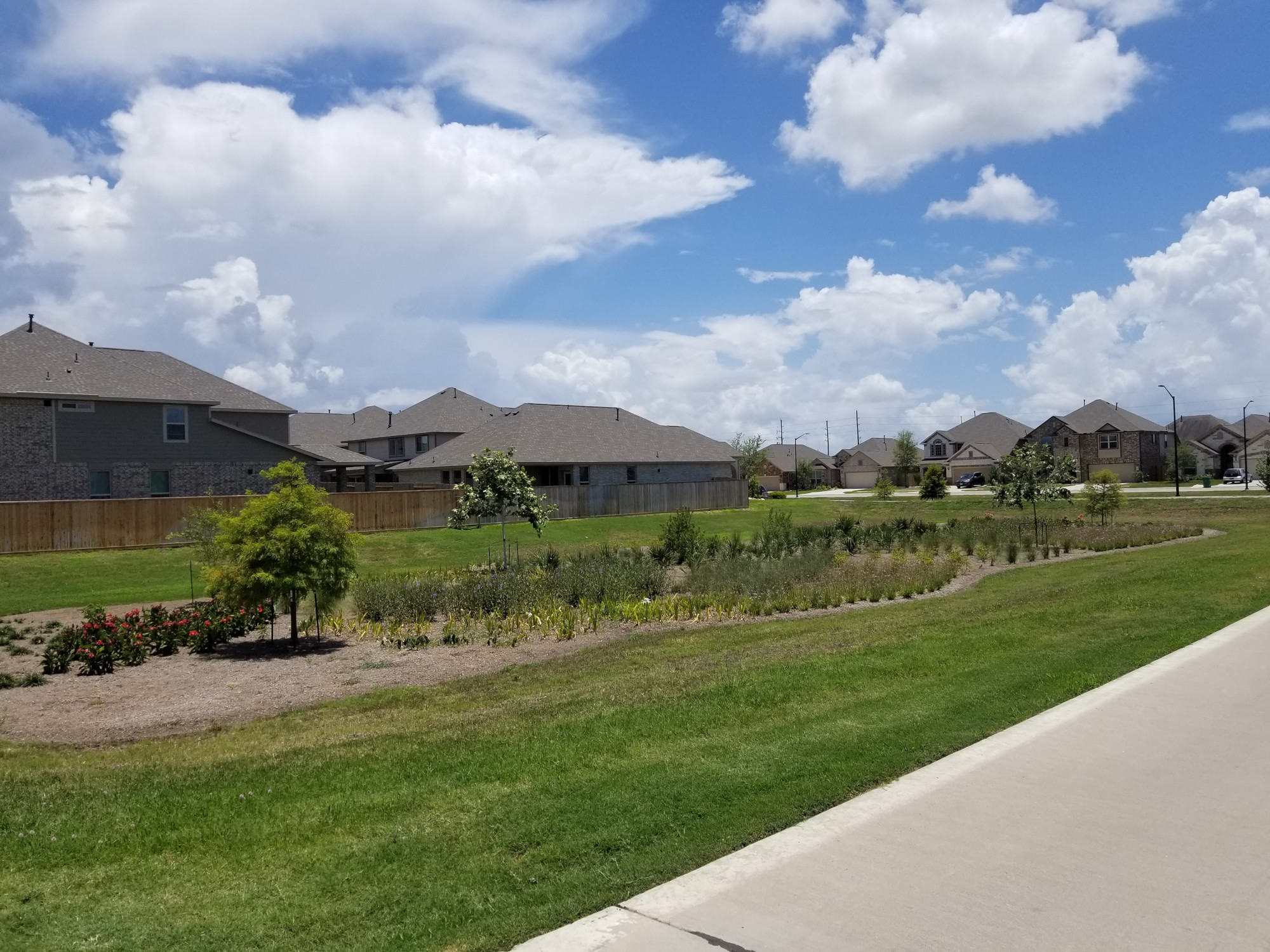SUMMARY:
Located outside of the City of Houston in Fort Bend County, the single-family residential project known as Camellia is a great example of how Stormwater Multifunctional Design can benefit the community, future residents, and the developer of the project. An evolution of Low Impact Development (LID) / Green Stormwater Infrastructure (GSI) techniques, the Stormwater Multifunctional Design approach increased lot yield and saved noteworthy development costs.
SITUATION:
The original design intent of the 90-acre community was to use stormwater canals to manage stormwater while offering 100% of the homes to be built on an amenity. The canals would be required to manage the 100-yr 24-Hours Flood Event (approximately 13-inches in 24-hours) with detention canals. The results of this plan were:
- Lot Yield – 224 residential lots
- Cost Per Lot – $34,700
- Total Construction Cost – $7,770,500.
Could a Stormwater Multifunctional Design approach do better?
SOLUTION:
The Stormwater Multifunctional Design solution included bioretention basins that use high-performance biofiltration inside the medians of a development’s roadways to slow the flow of water, while also providing detention. The scalable biofiltration system FocalPoint was used, which combines the efficiency of high-flow rate engineered soils with the durability and modularity of a highly pervious expandable underdrain/storage/infiltration system. In addition, when dry, the bioswales would provide immense green space throughout the community with its decorative plantings allowing for 99% of the lots to face an amenity.
RESULTS:
The next generation biofiltration strategies allowed the engineer to use a smaller footprint, reduce contractor error during installation, and keep the long-term maintenance costs low. 99% of lots were amenitized by locations on green spaces, while the solution also reduced Total Suspended Solids by 85%, Total Phosphorus by 52%, and Total Nitrogen by 60%. In addition, the financial impacts of the Stormwater Multifunctional Design approach were:
- Lot yield – 99 more lots (323 total)
- Cost Per Lot – $13,543 less than traditional ($21,156)
- Total Construction Costs – $937,100 less than traditional ($6,833,400)
When Stormwater Multifunctional Design is utilized for stormwater management and flood mitigation, the result can be significant to the developer, making more real estate available, increasing lot yield and lowering overall costs.





